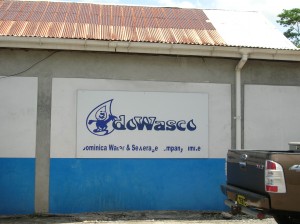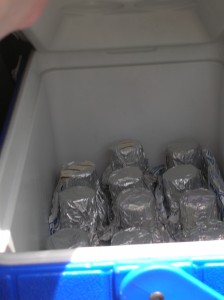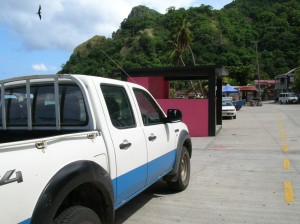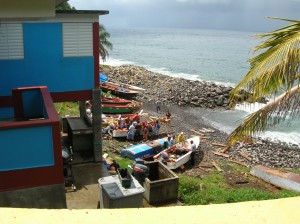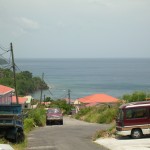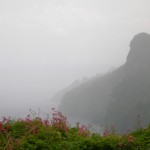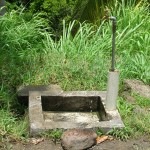Maryhelen Shuman-Groh
The Dominica Water and Sewerage Company, DOWASCO, is headquartered in Roseau. It is government run. There are a few water bottling companies and a number of households in the high peaks that are not on the DOWASCO system but, otherwise, potable water is supplied by DOWASCO. There is only one waste water treatment plant and that is also part of DOWASCO. It serves the greater Roseau area.
The Water Testing Laboratory and Waste Water Treatment Facility is located on the north bank of the Roseau River in the area known as Goodwill. There is still some confusion about why I am there and what I’m supposed to be doing and there are some staffing shortages due to illness and leave that compound the problem. As they’re trying to sort it out I have asked whether there isn’t something I could do to help, like catch up on data entry. I don’t care where you work or what you do, but there is always some kind of paperwork that has fallen behind. I am set the task of entering the water testing results for each area going back to the beginning of May (really not a bad lag in comparison to most backlogs I’ve seen!). Although it is not a complex project as it is transferring the field and lab results onto Excel, it does give me an opportunity to learn about the test sites and the results. By the next day and tentative plan is in place to have me shadow a couple of the technicians and learn the sample collection procedures and laboratory procedures.
Mornings are spent preparing a cooler full of test bottles and gathering up equipment, loading it into the company truck and setting out for test sites.
You may have guessed from previous posts that there is no place in Dominica that is easily accessible. My first field day is spent in and around Soufriere in the southwest corner of the island.
You may have guessed from previous posts that there is no place in Dominica that is easily accessible. My first field day is spent in and around Soufriere in the southwest corner of the island. This is the area I discussed in an earlier post when I learned that there were a lot of people using standpipes to supply household water and the ‘conveniences’ which are toilets, some with showers, also supplied by DOWASCO. I visited the public water stand that I had photographed from the sea last week.
The routes are designed to go to the farthest point first and work back toward the laboratory to minimize sample standing time. Even on one route the elevations of the villages vary radically from sea shore to mountainside. Some feel like the edge of the world…
Water samples are taken from stand pipes, usually the highest, middle and lowest of the system. A typical standpipe is a pipe and faucet in a cement basin.
The tap is opened and vented for a couple of minutes. Sample 1 is tested on site for conductivity, temperature and chlorine (some also field test pH but our samples are pH tested in the lab). A sample is taken in a sterile bottle for lab testing.
The technicians driving the sample route are also the public face of DOWASCO and may have to provide direct customer service and/or education. For example, one woman asked whether the ‘white’ in the water was too much chlorine. Tamara the tech who is kindly dragging me around the country, explains the air bubbles and actually shows her a sample as it settles down. Later in the route a woman tells her she has been unable to get through to customer service and Tamara puts in a request for her. If she spots a problem or if a standpipe is malfunctioning, she calls it in to the department in charge.
Fifteen samples require traveling the entire morning. We return to the lab mid-day, grab some lunch and set up for testing. To be continued…
LAB TESTS

